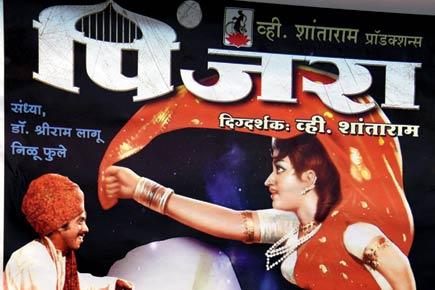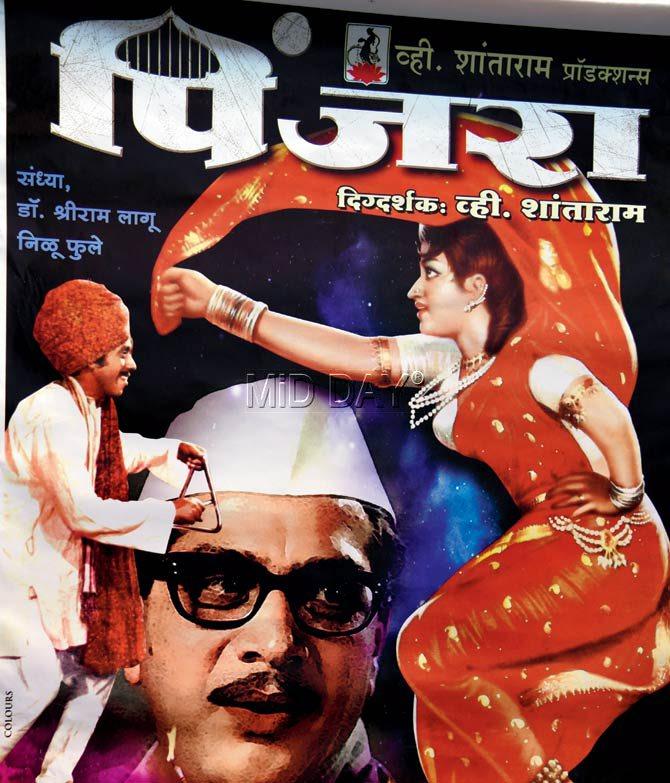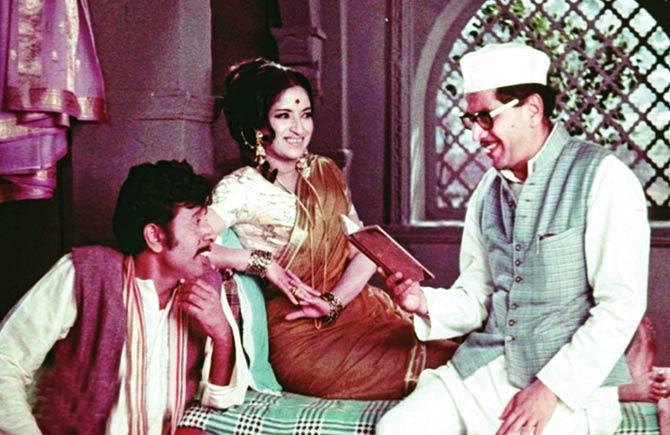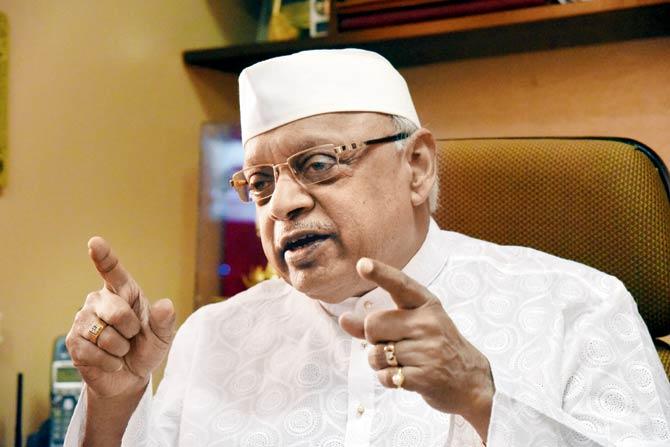V Shantaram's digitally re-mastered 1972 Marathi film Pinjra is wooing viewers once again after 44 years

At a time when commercial potboilers like Riteish Deshmkh's Lai Bhari are ruling the box office, a 1972 film made by cinema legend V Shantaram is drawing in viewers by the hordes into single screen theatres.
ADVERTISEMENT

One of the new posters of the film. Pic/Rane Ashish
Pinjra, starring veterans Dr Shriram Lagoo and Sandhya, it told the story of a righteous school teacher intent on reforming a Tamasha performer, and eventually falling in love with her.

Nilu Phule, Sandhya and Shriram Lagoo in a still from the film
In a fortnight of opening, the digitally enhanced version has already recovered Rs 60 lakh of its Rs 1.25 crore budget.

Sandhya in a still from the film
At his office at Rajkamal Studio, Shantaram's son, Kiran Shantaram, says to ensure viewers had a stellar cinematic experience, he spent from his own pocket to fit new projector lenses at cinema halls across Maharashtra, where the first Marathi film in colour was screened.

Kiran Shantaram, son of V Shantaram
With time and neglect, the negative of the film was in deplorable condition. Film distributor Purushottam Ladda's dream to re-release it seemed impossible. "There are only five or six good Marathi films that portray Lavani well. These drew in a large audience then, and continue to do so. I wanted to re-master one such film, Sangte Aika. Whoever watches it will go crazy; such is its brilliance. It ran for 134 weeks in Pune at the time. But since it was made in black and white, the cost of colouring will be high. And so, I thought Pinjra would serve as a milestone in my career," he says.
Shantaram says the film was shot in Kolhapur which supported an active film industry. With a 35 mm print, it wasn't easy to release films in multiple venues unlike today. "We released 18 prints in Mumbai and other major cities across the state. Over 20 centres celebrated its jubilee. In five centres, it ran for 50 weeks. My father would choose the centres a year in advance to get them ready for the film."
For Ladda, it was a challenge to convince the family and Sandhya to allow a non-Shantaram family member to re-release the film. Ladda obtained a positive of the film from the National Film Archives in Pune this January, and thus began its digitisation, which lasted 65 days. "If my father were alive, he would've digitised it several years ago," says Shantaram.
The low original resolution of the film didn't allow for it to be converted to cinemascope. The sound was mono. It's now Dolby 5.1. Musicians Avinash-Vishwajeet have upgraded the music score. "However, since the film is not in cinemascope yet, I haven't added English subtitles (which are ready with me), because I feel the youth today want a grand experience. Since the film doesn't fill up the screen, it won't interest them," he says.
The restoration has cost Ladda's firm Rs 1.25 crore, and he predicts that the film will rake in its best loot in the second and third weeks. "It will do the best business during the Jatra (travelling cinema). We sell tickets for Rs 15, but have lakhs of viewers come in for three screenings a day. All I have to do now is pray for it to rain [so that crops will bring profits] and many more viewers will come when the film travels around Diwali to villages," he says.
 Subscribe today by clicking the link and stay updated with the latest news!" Click here!
Subscribe today by clicking the link and stay updated with the latest news!" Click here!






